11 Herbal Teas For Rashes
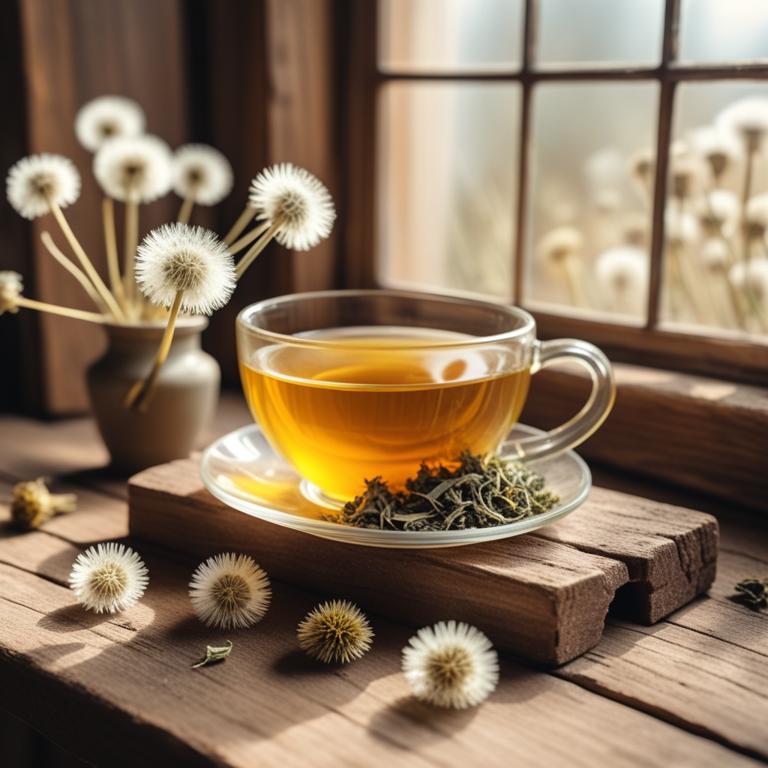
Herbal teas can be a great way to soothe and calm skin rashes.
These teas work by using the natural healing properties of specific herbs to reduce inflammation and promote skin health. For example, Calendula officinalis, also known as marigold, is often used in herbal teas to calm irritated skin and promote wound healing. Its anti-inflammatory properties help to reduce redness and swelling, making it an excellent choice for rashes. Another herb, Urtica dioica, or nettle leaf, is also commonly used in herbal teas to treat skin rashes. It's rich in antioxidants and has anti-inflammatory properties that help to soothe and calm the skin. When consumed as a tea, nettle leaf can help to reduce itching and irritation, making it a popular choice for people with skin allergies.
Melissa officinalis, also known as lemon balm, is another herb that's often used in herbal teas to calm skin rashes. Its soothing and calming properties help to reduce stress and anxiety, which can often exacerbate skin rashes. When consumed as a tea, lemon balm can help to promote relaxation and reduce inflammation, making it a great choice for people who experience stress-related skin issues. Using herbal teas to treat skin rashes can bring many benefits to your life. For one, it can help to reduce the use of harsh chemicals and medications, which can have negative side effects. Herbal teas are also a natural and gentle way to soothe and calm the skin, making them a great choice for people who want to avoid artificial ingredients.
Additionally, many herbal teas can be used topically, making them a convenient and versatile treatment option.
- 1. Calendula officinalis
- 2. Urtica dioica
- 3. Melissa officinalis
- 4. Hypericum perforatum
- 5. Echinacea purpurea
- 6. Lavandula angustifolia
- 7. Chamomilla recutita
- 8. Aloe barbadensis
- 9. Aloe vera
- 10. Symphytum officinale
- 11. Taraxacum officinale
1. Calendula officinalis
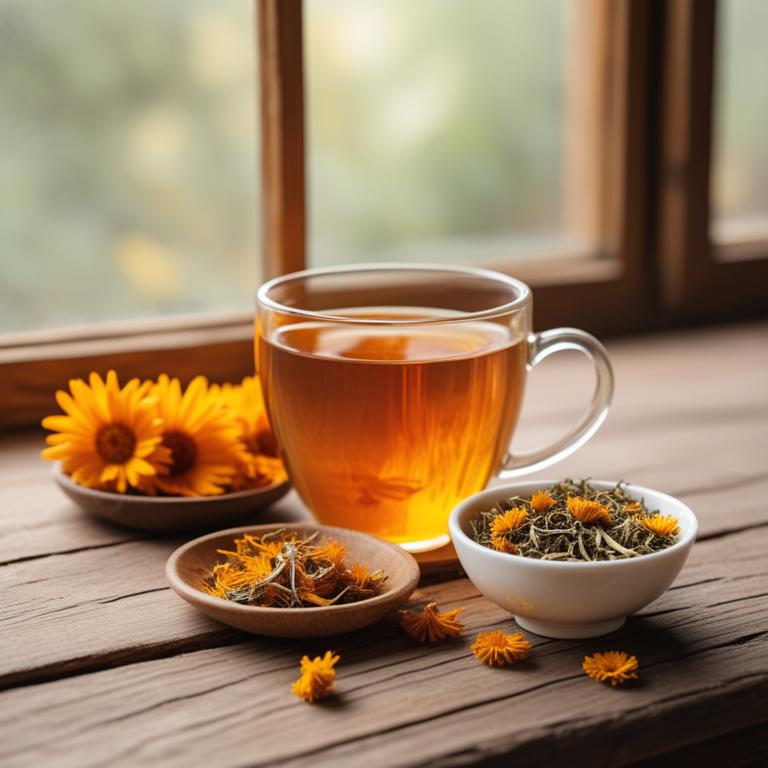
Calendula officinalis teas contains triterpenoid saponins, flavonoids, and carotenoids as its active constituents.
These compounds have anti-inflammatory and antimicrobial properties that help soothe and calm irritated skin. The flavonoids, specifically quercetin, help reduce inflammation and alleviate redness associated with rashes. The carotenoids, such as lutein and zeaxanthin, have antioxidant properties that protect the skin from damage caused by free radicals.
The combination of these properties in Calendula officinalis teas makes it a popular natural remedy for rashes, promoting healing and reducing discomfort.
- Gather 1 cup of dried Calendula officinalis flowers.
- Heat 1 cup of water in a pot.
- Pour 1 cup of boiling water over the dried flowers.
- Let the mixture steep for 5-7 minutes.
- Strain the tea into a cup and drink 1-2 cups 3 times a day.
2. Urtica dioica
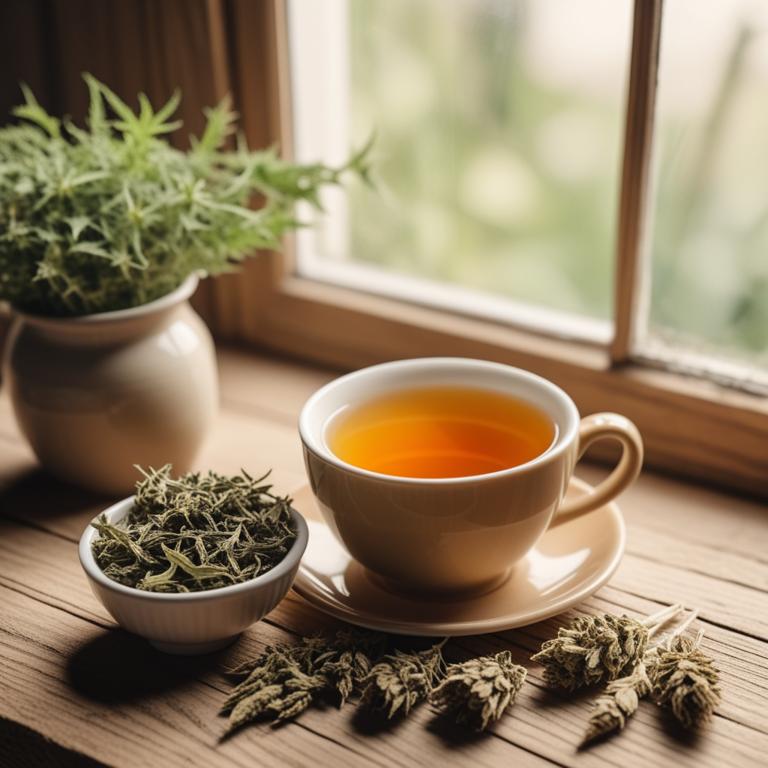
Urtica dioica teas contains bioactive constituents such as histamine, flavonoids, and saponins.
These compounds have anti-inflammatory properties that can help reduce redness and swelling associated with skin rashes. The flavonoids and saponins in Urtica dioica have been shown to have antiseptic and antipruritic effects, which can help soothe and calm itchy skin. The antihistamine properties of histamine can also help alleviate itching and discomfort caused by allergic reactions.
By reducing inflammation and itching, Urtica dioica teas can help provide relief from skin rashes.
- Gather 1 cup of fresh Urtica dioica leaves. Make sure they are clean and free of dirt.
- Chop the leaves into small pieces. Use 1 tablespoon of chopped leaves for a standard serving.
- Steep the chopped leaves in 1 cup of boiling water for 5-7 minutes.
- Strain the tea into a cup. Discard the solids.
- Drink 1 cup of the tea 3 times a day to help soothe rashes and skin irritations.
3. Melissa officinalis

Melissa officinalis teas contains rosmarinic acid, luteolin, and apigenin as its primary bioactive constituents.
These compounds possess anti-inflammatory and antioxidant properties that help to soothe and calm irritated skin, reducing redness and swelling associated with rashes. Rosmarinic acid has been shown to inhibit the production of pro-inflammatory enzymes, which contribute to the development of skin inflammation. Luteolin and apigenin exhibit antioxidant activity, protecting skin cells from oxidative damage and promoting healing.
By reducing inflammation and promoting healing, Melissa officinalis teas can help to alleviate symptoms of rashes, such as itching and discomfort.
- Gather 1 tablespoon of dried Melissa officinalis leaves or 2 tablespoons of fresh leaves.
- Add the Melissa leaves to 1 cup of boiling water.
- Reduce heat and let it simmer for 5-7 minutes.
- Strain the tea into a cup and let it cool.
- Drink 1/2 cup of the tea 3-4 times a day to help soothe rashes.
4. Hypericum perforatum
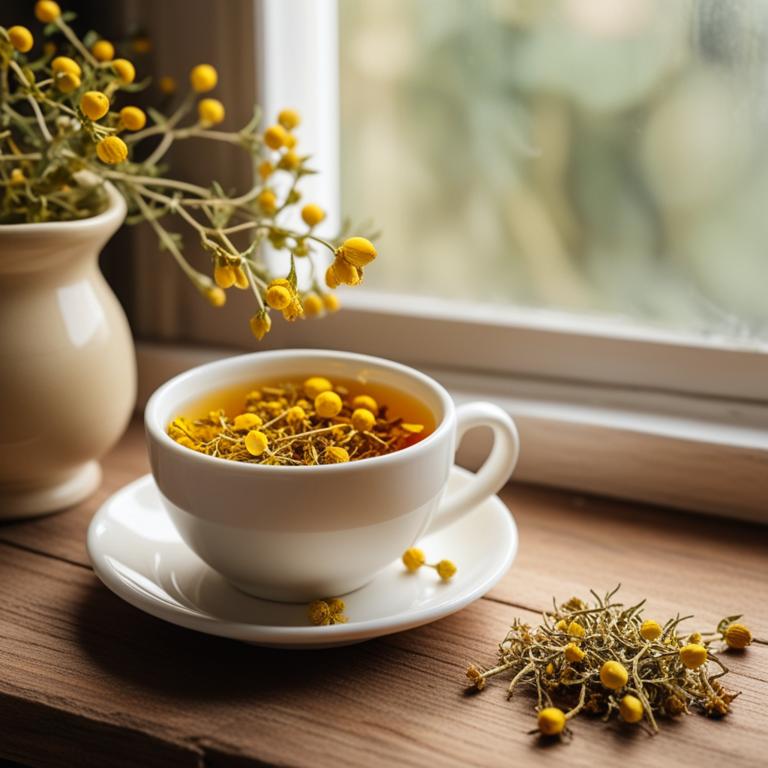
Hypericum perforatum teas contains flavonoids, such as rutin and quercetin, which have anti-inflammatory properties that help reduce redness and swelling associated with rashes.
The tea also contains naphthoquinones, including hyperforin and hypericin, which have antimicrobial properties that inhibit the growth of bacteria and fungi that can cause skin infections. These compounds work together to soothe and calm irritated skin, promoting healing and reducing the intensity of rashes. The tea's antihistamine properties also help alleviate itching and discomfort caused by allergic reactions.
By reducing inflammation, inhibiting bacterial growth, and soothing the skin, Hypericum perforatum teas can effectively help alleviate the symptoms of rashes.
- Gather 1 cup of fresh or dried Hypericum perforatum flowers.
- Combine the flowers with 1 cup of boiling water in a saucepan.
- Let the mixture steep for 5-7 minutes, then strain it.
- Add 1 tablespoon of honey to the tea to taste, if needed.
- Drink the tea 2-3 times a day to help soothe rashes.
5. Echinacea purpurea

Echinacea purpurea teas contains alkylamides and caffeic acid, which are responsible for its anti-inflammatory properties.
These compounds help to reduce swelling and ease redness, making it a popular remedy for rashes. Alkylamides also have immunomodulatory effects, which means they can help regulate the immune system and prevent it from overreacting to irritants. Caffeic acid has antioxidant properties, which can help protect the skin from damage and promote healing.
By reducing inflammation and promoting healing, Echinacea purpurea teas can help to soothe and calm rashes, providing relief from discomfort and promoting a return to healthy skin.
- Gather 1 cup of fresh Echinacea purpurea flowers and leaves, or 2 teaspoons of dried Echinacea purpurea.
- Combine 1 cup of boiling water with the Echinacea purpurea in a cup.
- Let it steep for 5-7 minutes to allow the herbs to release their properties.
- Strain the tea and discard the solids. Add honey to taste, if desired.
- Drink the tea 2-3 times a day to help soothe and calm the skin rash.
6. Lavandula angustifolia

Lavandula angustifolia teas contains linalool, linalyl acetate, and camphor, which are known as the main bioactive constituents.
These compounds have anti-inflammatory and antiseptic properties, making them effective in soothing and calming skin irritations. The antiseptic properties of linalool and camphor help to reduce the risk of infection, while linalyl acetate's anti-inflammatory properties can ease redness and swelling associated with rashes. The calming effects of these compounds also help to reduce stress and anxiety, which can exacerbate skin conditions.
Drinking Lavandula angustifolia teas may help to promote a balanced skin environment, reducing the occurrence of rashes and skin irritations.
- Gather 1 cup of fresh Lavandula angustifolia flowers or 1 tablespoon of dried flowers.
- Heat 1 cup of water until it's boiling.
- Add the Lavandula flowers to the boiling water and let it steep for 5-7 minutes.
- Strain the tea into a cup and discard the flowers.
- Let the tea cool down before applying it to the affected skin area using a cloth or cotton ball.
7. Chamomilla recutita
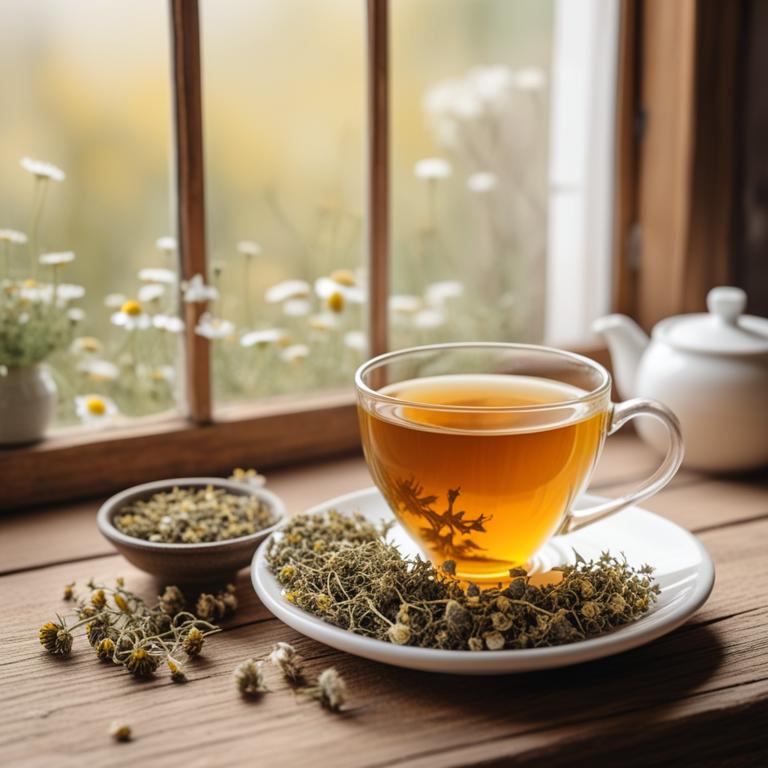
Chamomilla recutita teas contains apigenin and luteolin, two active constituents with anti-inflammatory properties.
These compounds help to soothe and calm irritated skin, reducing redness and swelling associated with rashes. Apigenin, in particular, has been shown to inhibit the production of pro-inflammatory chemicals, which can exacerbate rash symptoms. Additionally, chamomilla recutita's antiseptic properties help to prevent infection and promote healing in affected areas.
By reducing inflammation and promoting a healthy environment for skin to heal, Chamomilla recutita teas can provide relief from rash symptoms.
- Gather 1 cup of dried Chamomilla recutita flowers
- Steep 1 tablespoon of dried flowers in 8 cups of boiling water for 5-7 minutes
- Strain the mixture into a large bowl to remove flowers
- Let the tea cool down to room temperature
- Apply the cooled tea to the affected area using a clean cloth
8. Aloe barbadensis
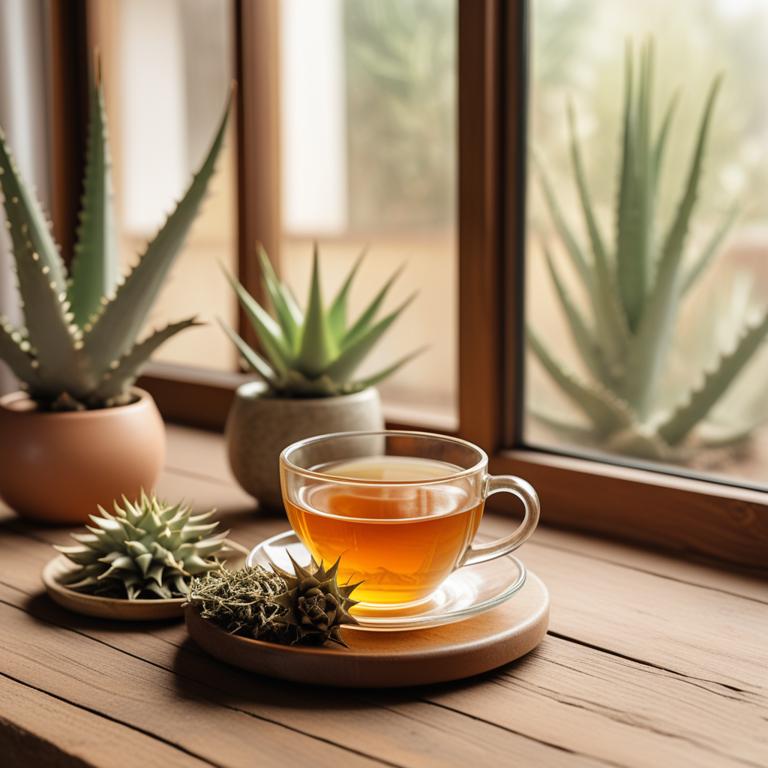
Aloe barbadensis teas contains several bioactive constituents, including vitamins A, C, and E, as well as minerals like calcium and potassium.
These nutrients have anti-inflammatory properties that help soothe and calm irritated skin caused by rashes. The tea's high levels of aloe-emodin and aloin also contribute to its soothing effects, as they have been shown to reduce redness and swelling. Aloe barbadensis teas also contains compounds like glycoproteins and polysaccharides, which help to protect the skin from further irritation and promote healing.
By consuming aloe barbadensis tea, people may experience relief from rashes due to its combination of anti-inflammatory and soothing properties.
- Cut 2-3 inner leaves of Aloe barbadensis from the plant. Wash your hands before handling the plant.
- Remove the outer green skin of the leaves. Cut the gel into small pieces.
- Blend the gel pieces with 1 cup of water in a blender until smooth. Strain the mixture using a cheesecloth or a fine-mesh sieve.
- Mix 1-2 tablespoons of the Aloe gel mixture with 1 cup of boiling water. Let it steep for 5-10 minutes.
- Strain the tea and let it cool. Soak a clean cloth in the tea and apply it to the affected area for 15-30 minutes. Repeat as needed.
9. Aloe vera
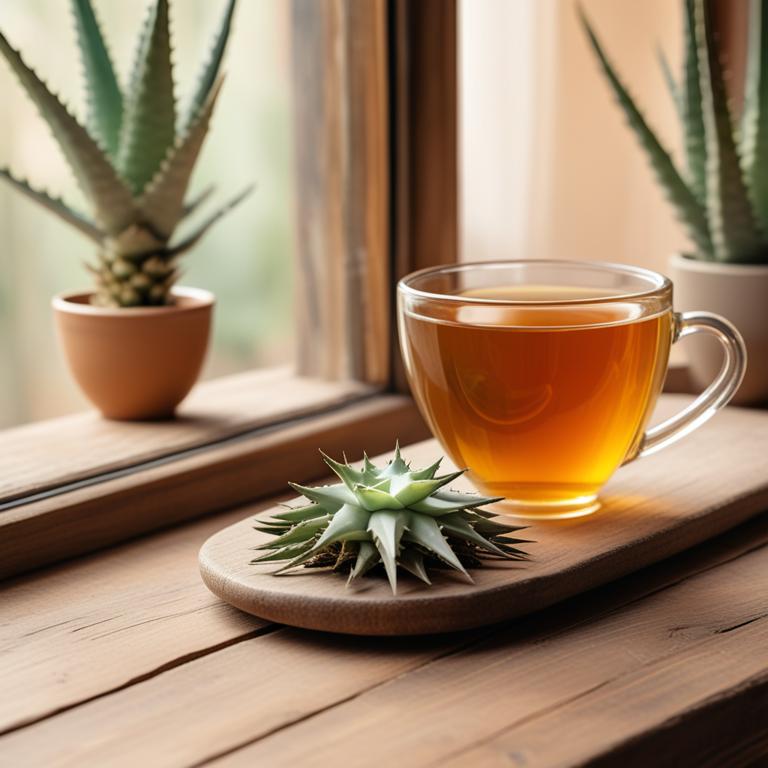
Aloe vera teas contains bioactive constituents like aloin, aloe-emodin, and vitamins A, C, and E. These compounds have anti-inflammatory and soothing properties that help calm irritated skin.
The anti-inflammatory properties in aloe vera reduce redness and swelling in rashes, while the vitamins promote skin healing and protect against further irritation. Aloe-emodin also has antimicrobial properties that prevent infection and promote a healthy balance of skin flora.
The combination of these properties makes aloe vera teas a potentially effective remedy for soothing and healing skin rashes.
- Cut an aloe vera leaf from the plant. Use a clean knife.
- Scoop out the clear gel from the leaf with a spoon. Use 2-3 tablespoons.
- Add 1 cup of boiling water to a cup. Let it cool for 5 minutes.
- Add the aloe vera gel to the cooled water. Stir well.
- Drink the tea slowly. Repeat as needed for rashes.
10. Symphytum officinale
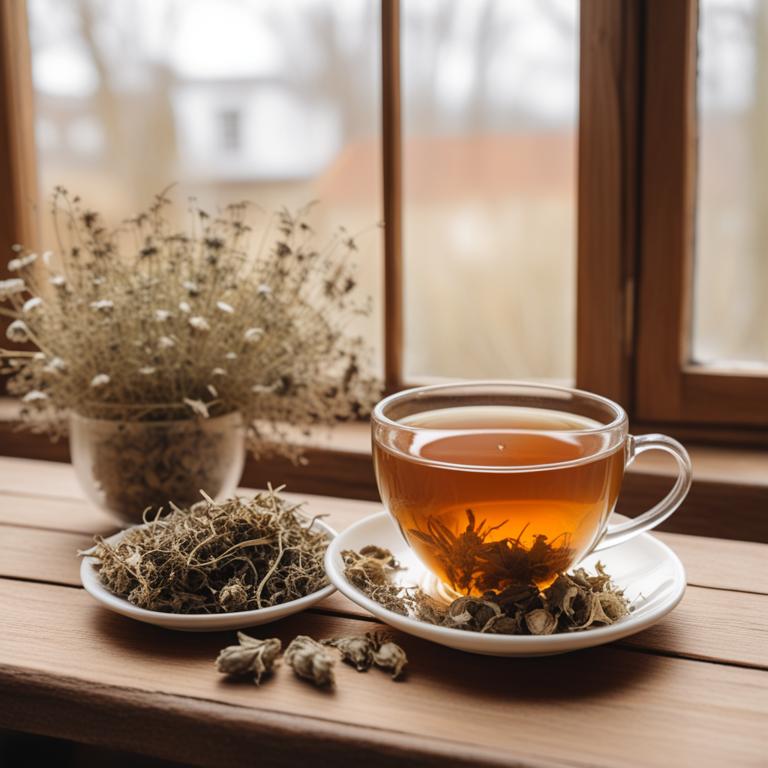
Symphytum officinale teas contains the bioactive constituents allantoin and rosmarinic acid.
These compounds have anti-inflammatory and soothing properties, which can help to reduce redness and itching associated with rashes. Allantoin, in particular, is known to promote wound healing and tissue repair, which can aid in the recovery of skin affected by rashes. Rosmarinic acid has antioxidant properties that can help to protect the skin from damage caused by free radicals, further reducing inflammation.
By drinking Symphytum officinale tea, you may experience relief from the discomfort and pain associated with rashes.
- Gather 1 tablespoon of dried Symphytum officinale leaves and flowers.
- Boil 1 cup of water in a pot.
- Pour the boiling water over the dried Symphytum officinale in a cup.
- Let the mixture steep for 5-7 minutes, then strain the liquid.
- Drink the tea 2-3 times a day, as needed, to soothe rashes and skin irritations.
11. Taraxacum officinale

Taraxacum officinale teas contains several bioactive constituents, including flavonoids, saponins, and terpenoids.
These compounds have anti-inflammatory properties, which can help reduce redness and swelling associated with rashes. The tea also contains taraxasterol, a triterpenoid that has been shown to inhibit the production of pro-inflammatory chemicals in the body. This reduction in inflammation can help soothe and calm the skin, promoting healing and reducing discomfort.
The anti-inflammatory and antioxidant properties of Taraxacum officinale tea may also help protect the skin from further irritation and damage.
- Gather 1 cup of fresh Taraxacum officinale leaves and flowers. Wash them with clean water.
- Combine the Taraxacum officinale leaves and flowers with 1 cup of boiling water in a teapot.
- Let the mixture steep for 5-7 minutes. Strain the liquid with a fine-mesh sieve into a cup.
- Add 1 tablespoon of honey or sugar to taste, if needed. Stir well.
- Drink the tea 2-3 times a day to help soothe skin rashes. Store leftover tea in the refrigerator for up to 24 hours.